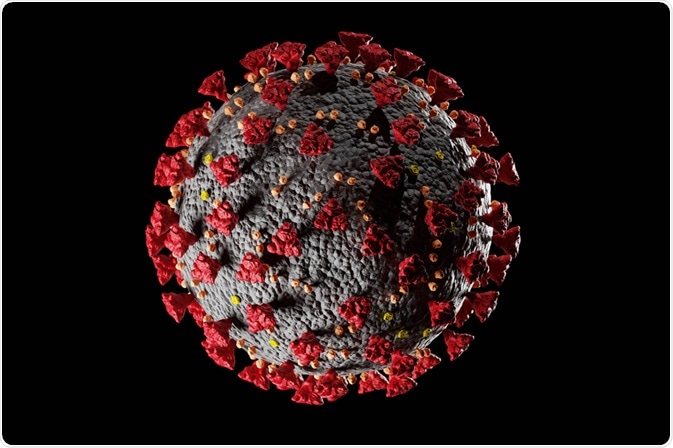The advancement that CRISPR gene-editing technology has brought to scientific research is substantial. This is particularly evident concerning its therapeutic potential and ability to create accurate disease models. However, its use also extends to other applications such as modifying viruses for diagnosis, viral inhibition, and studying the pathogenesis of infectious diseases.

Image Credit: Meletios Verras/Shutterstock.com
Although CRISPR is primarily thought of as a molecular tool to edit genes, it is important to note that the editing system was naturally present in bacteria as a defense mechanism against invading viruses (bacteriophages). Recently, researchers have been focused on exploiting this existing mechanism of CRISPR and altering it to respond to its original function against viruses.
Using CRISPR-Cas9 to modify double-stranded DNA viruses
Genome editing is necessary for viruses such as the double-stranded DNA Vaccinia virus, which is involved in virus-mediated immunotherapy research. This is because recombinant Vaccinia viruses are being currently researched for their use as interventional agents in cancer and the prevention against diseases.
The methods that are currently utilized for editing the viral genome of Vaccinia viruses, such as those based on homologous recombination have limited efficiency. However, interestingly in a study conducted by Yuan et al., 2015, researchers were able to show how the CRISPR-Cas9 system enabled the genome of Vaccinia viruses to be edited rapidly and efficiently.
The study investigated whether double-strand breaks in targeted sites of the Vaccinia viral genome, that would increase genome editing efficiency and in turn the potential to generate Vaccinia virus vectors with therapeutic genes, could be induced via CRISPR-Cas9. The results obtained from the study found that CRISPR-Cas9 along with designed guide RNAs targeting the N1L gene, which has a significant role in virulence and immune response regulation, were able to significantly improve the genome editing efficiency and modification of the virus.
How is CRISPR revolutionizing biomedical science?
Using CRISPR-Cas13 to modify single-stranded RNA viruses
Conversely, in a recent study, Freije et al., 2019 demonstrated the ability of CRISPR-Cas13 to detect and modify single-stranded RNA viruses and so render them incapable of infecting further human cells. The team of researchers involved in the study hypothesized that CRISPR-Cas13 could be potentially used to modify and inhibit viruses since CRISPR-Cas13 targets and cleaves RNA complementary to CRISPR RNA. Computational methods were used by the researchers to identify CRISPR RNAs that would target viral genes in the lymphocytic choriomeningitis virus, influenza A virus, and vesicular stomatitis virus.
The investigation found that following infection of human embryonic kidney cells with the earlier mentioned viruses, Cas13 alongside designed target CRISPR guide RNA, were able to reduce viral RNA by up to 40-fold.
Freije et al., 2019 showed the ability of Cas13 to be harnessed to both detect viral RNA and destroy it, therefore, demonstrating its use for both diagnosis and viral inhibition purposes. This application is particularly suited to Cas13 due to its ability to cleave RNA more efficiently than the CRISPR-Cas9 system. This proof of concept study demonstrates the exciting potential that programming CRISPR as an antiviral technology can hold, as this would enable the faster and more efficient development of antivirals against newly emerging pathogens.
Can CRISPR be used to target SARS-CoV-2 and Influenza viruses?
The necessity of antiviral strategies against infectious disease for which there are no existing effective vaccines and pharmaceuticals has been apparent with the Coronavirus 2019 disease pandemic. A recent study has shown the potential use of CRISPR in modifying viruses and therefore as a potential strategy against infectious diseases like SARS-CoV-2 and Influenza virus. The study which is based on using the CRISPR-Cas13d approach demonstrates how RNA degradation in SARS-CoV-2 and Influenza A virus can be carried out in respiratory epithelial cells using specifically designed CRISPR RNA.
Abbott et al., 2020 carried out investigations on human lung epithelial cells using CRISPR RNAs designed to target the conserved viral regions of SARS-CoV-2 and Influenza virus. The results from the study showed that viral RNA can be robustly reduced and that the synthesis of further resulting mRNAs can be inhibited.
Together the data obtained from the proof of concept study showed that with much further research the CRISPR-Cas13d system has the potential to act as a prophylactic antiviral strategy against SARS-CoV-2 in human cells.

Image Credit: narci5/Shutterstock.com
Conclusion
The emerging application of CRISPR technology for modifying viruses in research may well lead to the treatment of various diseases caused by viruses. This is especially exciting research for long-term virus associate diseases, for which available drugs are ineffective.
However, the major challenge for researchers remains to demonstrate that CRISPR applications against viruses will be as effective in humans as they are in laboratory investigations. Furthermore, it will also be significant of course, to consider the likely cost of using CRISPR for such applications when compared with conventional methods that are already available.
References:
- Abbott, T., Dhamdhere, G., Liu, Y., Lin, X., Goudy, L., Zeng, L., Chemparathy, A., Chmura, S., Heaton, N., Debs, R., Pande, T., Endy, D., La Russa, M., Lewis, D. and Qi, L., 2020. Development of CRISPR as an Antiviral Strategy to Combat SARS-CoV-2 and Influenza. Cell, 181(4), pp.865-876.e12.
- Freije, C., Myhrvold, C., Boehm, C., Lin, A., Welch, N., Carter, A., Metsky, H., Luo, C., Abudayyeh, O., Gootenberg, J., Yozwiak, N., Zhang, F. and Sabeti, P., 2019. Programmable Inhibition and Detection of RNA Viruses Using Cas13. Molecular Cell, 76(5), pp.826-837.e11.
- Guo, Z., Lu, B., Guo, Z., Giehl, E., Feist, M., Dai, E., Liu, W., Storkus, W., He, Y., Liu, Z. and Bartlett, D., 2019. Vaccinia virus-mediated cancer immunotherapy: cancer vaccines and oncolytics. Journal for ImmunoTherapy of Cancer, 7(1).
- Strich, J., and Chertow, D., 2018. CRISPR-Cas Biology and Its Application to Infectious Diseases. Journal of Clinical Microbiology, 57(4).
- Yuan, M., Zhang, W., Wang, J., Al Yaghchi, C., Ahmed, J., Chard, L., Lemoine, N. and Wang, Y., 2015. Efficiently Editing the Vaccinia Virus Genome by Using the CRISPR-Cas9 System. Journal of Virology, 89(9), pp.5176-5179.
Further Reading
Last Updated: Sep 21, 2020